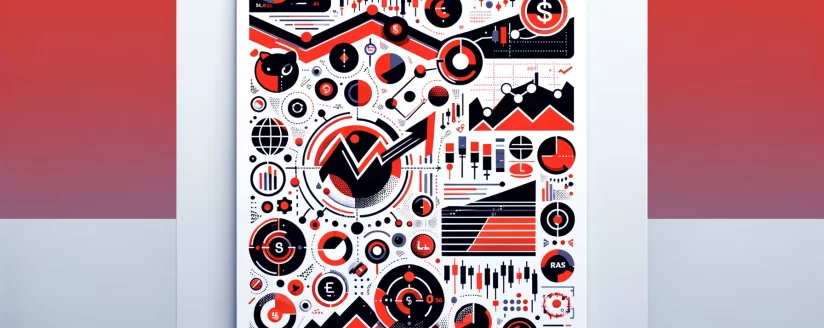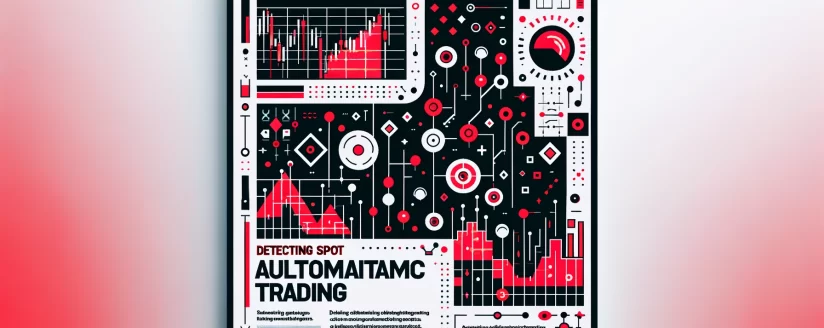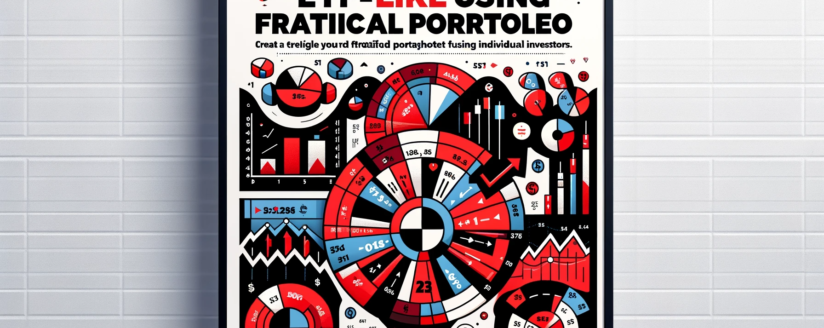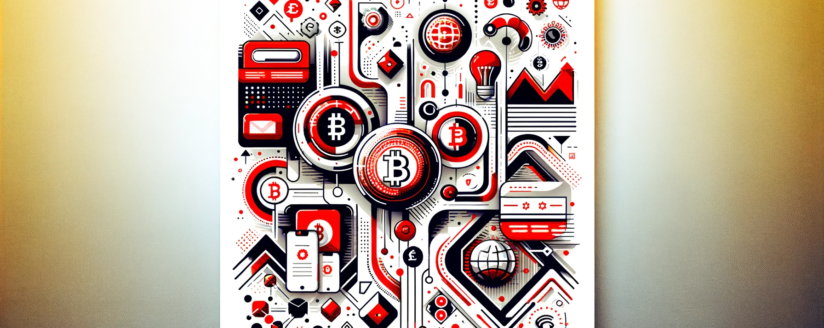Over the past decade, we have frequently heard the phrase ‘Blockchain technology’ regarding digital assets like BTC.
It is not a secret that blockchain is a revolutionary technology. It is transforming every possible segment of our life. From financial services to shopping, from healthcare to tech and travelling – this top-notch technology has completely changed the way companies operate and continues doing so. Blockchain’s abilities are not fully unlocked yet, and there are still many more options needed to get mass adoption.
It is most simply defined as a decentralized and distributed system that records the provenance of a digital asset. By inherent design, the data on a blockchain is unable to be changed, which makes it a legitimate disruptor for businesses that work with payments, documents, and cybersecurity. Take a look at our article. It will show you what it is, how it is utilized and its pros and cons. Let’s dig into this theme.

Definition: what is blockchain?
A blockchain is a software that allows a network of computers to link directly to each other without third-party interference. It establishes a distributed or decentralized network of computers through which values can be sent instantly, exchanged instantly, or stored securely and at a lower cost.
The data is copied to multiple nodes, and each of these nodes runs the copy of the blockchain. Due to this, and the fact that the data is kept immutably in chains, blockchain eliminates the chances of the digital records being lost. It also reduces the chances of having the documents tampered, and a situation where they become unavailable in case one user’s node or computer is inaccessible.
Aside from the definition above, in simple terms, the name blockchain means a wide range of blocks. Data is kept in blocks, and then the blocks are gathered and protected as the transfers continue to be done within the ecosystem. The chain of blocks is connected to each other, so it is hard to lose the history of transactions.
Further, each block is time-stamped with details such as the time, date, and amount of transactions being public.

Advantages of this system
In fact, blockchain and its options can provide multiple advantages to organizations — whether they are utilizing a decentralized public network or opting for private blockchain-based applications. Check them out.
Trustworthy
Blockchain builds trust between its participants. As a consequence, these entities are willing to engage in business dealings that involve transactions or data sharing that they may not have otherwise done or would have required an intermediary to do so. The enablement of trust is one of blockchain’s most crucial advantages. Its value is evident in early blockchain use cases that facilitated transfers among entities that do not collaborate but have to share information or funds. BTC and alternative coins, in general, are quintessential examples of how blockchain enables trust between users who do not know each other.
Decentralized structure
Decentralization is not a new concept. When building a technology solution, three primary network architectures are typically considered: centralized, distributed, and decentralized. While blockchain technologies often make use of decentralized networks, a blockchain application itself cannot be categorized simply as being decentralized or not. Instead, decentralization is a sliding scale and should be applied to all aspects of a blockchain application. By decentralizing the management of and access to resources in an application, more excellent and fairer service can be achieved. Decentralization typically has some tradeoffs, such as lower transaction throughput, but ideally, the tradeoffs are worth the improved stability and service levels they produce.
Improved security and private systems
Blockchain is not immune to hacking, but being decentralized gives blockchain a better line of defence. To compromise a chain, a scammer or criminal would need control of more than half of all the computers in the same distributed ledger (it is unlikely, but possible—more on that later).
The largest and best-known blockchain networks, such as Bitcoin and Ethereum, are public and allow anyone with a computer and an internet connection to participate. Instead of creating a security crisis, having more people on a blockchain network tends to increase security. More participating nodes means that more people are checking one another’s work and calling out bad actors.
That is one reason why, paradoxically, private blockchain ecosystems that require an invitation to participate can actually be more vulnerable to attack and manipulation.
Reduced costs
Blockchain’s nature also can cut costs for organizations. It creates efficiencies in processing transactions. It also decreases manual work such as uniting and correcting information, as well as simplifying reporting and auditing methods. Specialists pointed to the savings that financial institutions see when using blockchain, showing that blockchain’s abilities to streamline clearing and settlement translate directly into process cost savings. More broadly, blockchain helps businesses cut costs by eliminating middlemen. For example, vendors and third-party providers have traditionally provided the processing that blockchain can do.
Fast transfers
By liquidating intermediaries, as well as replacing remaining manual processes in transactions, blockchain can handle transactions significantly faster than conventional methods. In some cases, blockchain can handle a transaction in seconds or less. However, times can vary; how quickly a blockchain-based system can process transactions depends on multiple factors, such as how large each block of data is and network traffic. Still, experts have concluded that blockchain typically beats other processes and technologies in terms of speed. In one of the most prominent applications of blockchain, Walmart integrated the system to trace the source of sliced mangoes in seconds — a process that had previously taken seven days.
Transparency and traceability
Without blockchain, each organization has to hold a separate data bank. Because blockchain uses a distributed ledger, transfers and info are recorded equally in different places. All ecosystem users with permission access see the same data at the same time, and they can be sure that it provides total transparency. All transfers are immutably recorded and are time- and date-stamped. This enables members to view the whole history of a transaction and virtually eliminates any opportunity for fraud.
According to specialists, you are able to find the origins of a variety of information and goods via blockchain. It can help to prove they are legal, not fake.
Immutability
Immutability simply means that transactions, once recorded on the blockchain, can not be changed or deleted. On the blockchain, all transactions are time-stamped and date-stamped, so there is a permanent record. As such, blockchain can be used to track information over time, enabling a secure, reliable audit of information. (That is the opposite solution to error-prone paper-based filing and legacy computer systems that could be corrupted or retired.) This blockchain system can be used to digitize real estate transactions to keep track of property titles even as they change hands, as an example of this benefit’s potential.
Individual control of records
Blockchain enables an unprecedented amount of individual control over one’s own digital data, experts said. “In a world where data is a very valuable commodity, the technology inherently protects the data that belongs to you while allowing you to control it,” said Michela Menting, a research director at ABI Research organization. Individuals and individual organizations can decide what pieces of their digital data they want to share and with whom and for how long, with limits enforced by blockchain-enabled smart contracts.
Integrating digital assets
Tokenization is the solution where the value of a good (whether a physical or digital one) is converted into a digital token that is then noted on and then spread via blockchain. Tokenization has caught on with digital art and other digital coins, but tokenization has a broader implementation that could smooth processes within a business, noticed Joe Davey, director of technology at global consulting company West Monroe.
Top-notch technologies
Businessmen across different spheres are learning more about this technology and integrating blockchain-based solutions to resolve complex challenges and improve the whole system accessible within these companies.
So, all systems can even be automated with “smart contracts,” which boost your performance and speed the tech even further. Once pre-specified conditions are met, the next step in the transaction or process is automatically triggered. Smart contracts reduce human intervention as well as reliance on third parties to verify that the terms of an agreement have been met. In insurance, for example, once a customer has provided all the required info to file a claim, the claim can automatically be posted and paid.

What are the cons of this technology?
Public open source blockchains are not without their hazards and challenges. Here is a list of the top concerns:
Environmental Impact
Blockchain networks like Bitcoin use a lot of electricity to validate transfers, leading to environmental concerns. For instance, Bitcoin consumes more electricity than a small, medium-sized European country, and Bitcoin mining is threatening China’s climate change goals.
However, many would argue that Bitcoin is held to higher environmental standards than anything. This may be true, especially if you consider that the blockchain and Bitcoin are an alternative to the traditional finance system that uses much more electricity and has a much larger environmental impact.
A study by Galaxy Digital suggests Bitcoin energy consumption is less than half that of the traditional financial solution. If anything, you could argue that Bitcoin is a step in the right direction for the environment.
No one is saying that making strides to lowering the carbon footprint should not be on the agenda (this is already happening with some mining farms shifting to renewable energy sources like solar panels and the El Salvadoran President calling for a plan to use geothermal energy (volcanoes) to mine Bitcoin).
But it is crucial to maintain a balanced view when viewing the cost, environmental impact, and blockchain pros.
Personal Responsibility
One of blockchains and cryptocurrencies’ most significant advantages is also its biggest weakness. When you invest in public open-source blockchains by mining or buying cryptocurrencies and store it in your cryptocurrency wallet (your wallet is like your bank account, except only you can access it and have the passwords), only you control your money.
You are your own bank— and this is great! But if you lose your seed phrases – the list of words that give you access to recover your wallets – there is no recourse (compared to banks where you can reset your password). Your money is lost forever.
Unsurprisingly, a large portion of Bitcoin remains permanently lost. According to some estimates, 20% or 3.7 mln of the currently minted Bitcoin is probably lost forever.
Growing problems
Even though public blockchains remain more efficient than traditional banking methods, decentralization comes at the cost of scalability. Trying to widen blockchain networks to global capacity, in turn, is the root cause of speed inefficiencies. It is why, as we saw, Bitcoin and Ethereum can only process a maximum of seven and 30 transfers, respectively, compared to Visa’s 24,000.
Luckily solutions are being built to improve capacity and the speed of transfers. For example, the lightning network gives an opportunity to happen off the Bitcoin blockchain to speed up transfers. On Ethereum, many innovative solutions are being developed to improve scalability and speed, including rollups, zero-knowledge proofs and side chains.
False Narratives
Some cryptocurrencies are undoubtedly used in unlawful activity. The most famous example is Silk Road: people laundered money and bought drugs on the platform using Bitcoin.
However, this is no different from the illegal activity that constantly happens when people use other currencies like USD.
This false narrative that cryptocurrencies are only or mainly used for illicit activities only delays their inevitable adoption, which can hugely benefit everyone, including the financial system.

Use cases and industry applications
Blockchain technology’s core characteristics include decentralization, transparency, invariability, and automation. These elements can be applied to various industries, creating a multitude of use cases. Here are what we believe to be the most pertinent and important use cases for enterprises, institutions, and individuals.
Process payments and transfers
Possibly the most obvious use case for this trending tech is as a means to speed up the transaction process of money among its participants. As has already been mentioned, most transfers can be processed over this top-notch technology and can be solved in a flash. The most crucial detail is that traditional businesses are excluded from the process. On weekends, holidays, or late nights your transaction will be accomplished in a flash.
Control supply chains
Blockchain also comes in particularly handy when it comes to regulating supply chains. By excluding unnecessary paperwork, organizations should be able to define ineffectiveness within their supply chains easily. In addition, locate items in real-time.
Retail loyalty rewards programs
Blockchain could further revolutionize the retail experience by becoming the go-to for loyalty rewards. By creating a token-based system that rewards consumers and storing these tokens within a blockchain, would incentivize consumers to return to a certain store or chain to do their shopping. It would also eliminate the fraud and waste commonly associated with paper- and card-based loyalty rewards systems.
Digital passports
The traditional identity systems of today are fragmented, insecure, and exclusive. Blockchain enables more secure management and storage of digital identities by providing unified, interoperable, and tamper-proof infrastructure with key benefits to enterprises, users, and IoT management systems.
An effective way of sharing information
Cryptocurrency IOTA launched a beta version of its Data Marketplace in November, demonstrating that blockchain could be used as a marketplace to share or sell unused data. Since most enterprise data goes unused, blockchain could act as a mediator to keep and move this information to make a host of businesses perfect. While still in its early stages, IOTA has more than 35 brand-name participants (with Microsoft being one) offering it feedback.
Copyright and royalty protection
Content producers also are adopting blockchain to protect music files and other copyright-protected materials. As streaming media becomes the norm, blockchain technology can help protect against unauthorized sharing and also help copyright owners audit their royalties.
Trademark owners also will be able to leverage blockchain technology to protect their rights.
Online voting
Are you worried about voter fraud? Well, worry no more about blockchain technology. Blockchain offers the ability to vote digitally, but it is transparent enough that any regulators would be able to see if something were changed on the network. It mixes the ease of digital voting with the immutability of blockchain to make a voting process transparent.
Real estate, land, and auto-transfer ownership
One of the primary goals of blockchain is to take a paper out of the equation since paper trials are often a source of confusion. If you are buying or selling land, a house, or a car, you will need to transfer or receive ownership. Instead of handling this on paper, blockchain can store titles on its network, allowing for a transparent view of this transfer, as well as presenting a crystal-clear picture of legal possession.
Food safety
There is little margin for error in the food industry. One mishap in food supply or preparation can send people to the hospital, or worse still, an early grave.
The main culprit in most illnesses is inefficient tracking. When outbreaks occur, traditional food supply methods make tracing the origin of the contamination difficult and time-consuming. Blockchain is a reasonable solution.
The result is a customizable suite of solutions that can increase food safety and freshness, unlock supply chain efficiencies, minimize waste, enhance a brand’s reputation, and contribute directly to its bottom line.
Weapons tracking
One of the most discussed topics on any news network at the moment is gun control as well as weapons accountability. Blockchain can be a basis for a transparent and constant registry network that assumes law enforcement and the federal government to track gun or weapon possession, as well as store data of weapons traded in private.
Tax control
The digital age is shaping the world of tax into an entirely different format. It not only shifts the relationship between taxpayers and tax authorities but alters the way tax returns are submitted, taxes are paid, and information is stored. Blockchain technology has the capacity to disrupt and reorganize accounting and automate the process of payments, transfer and recording of assets. The potential of digitizing taxes has been noticed by many countries, and new solutions arise. For example, SAF-T in Europe or real-time electronic invoicing in South America.
Medical record-keeping
Since the patient has no control over the data, the chances of data being misused are high. So we need a patient-centred approach that is entirely decentralized, which can identify data thefts, prevent data manipulation, and the patient has the right to access control. It serves as the best way to address all the problems and fulfil the needs. Blockchain being a decentralized and distributed ledger, can also impact billing, record sharing, medical research, identify thefts and financial data crimes in days to come. Implementation of smart contracts in health care can simplify things even better. Where invoking, record creation and validation will be done on this network.
Wills or inheritances
This system could have the potential for other valuable applications. This network may also be able to solve your problems, such as inheritances and electronic wills are some of them.
The short answer is that wills can be written onto a blockchain. Electronic wills on a blockchain, also known as ‘crypto wills’, are already being created.
People are accumulating a lot of digital wealth these days, which can be lost forever after the key holder dies. The reason for this is due to the secure nature of the blockchain, which makes it inaccessible to anyone except the key holder. If the keyholder dies without sharing their private key, their assets on the blockchain cannot be retrieved.
Therefore one solution to this is to write your will onto the program, which could be automatically executed via smart contracts. The testator can list their assets and private key on their will, but this would not be accessible to anyone except the beneficiaries. This makes it much safer and secure than a traditional paper will, which could get lost or tampered with. Safe Haven, for example, gives users the opportunity to secure digital assets so that the investor’s legacy can be passed down to their beneficiaries securely.
Equity trading
At some point, blockchain could rival or replace current equity trading platforms to buy or sell stocks. Because blockchain networks validate and settle transactions so quickly, it could eliminate the multi day wait time investors encounter when selling stock(s) and seeking access to their money in order to reinvest or withdraw.
Managing Internet of Things systems
Networking giant Cisco Systems may be behind a blockchain-based application that would monitor Internet of Things (IoT) networks. The IoT describes wirelessly connected devices that can send and receive data. Such an application could determine the trustworthiness of devices on a network — and continuously do so for devices entering and leaving the network, such as smart cards or apps.
Your data and funds are safe and sound
Data is quickly becoming one of the most valuable resources in the world.
In addition, smart contracts within blockchain systems have the power to be changed according to the requirements of companies or users. Essentially, instead of handing your files to a company like Amazon or Microsoft, you distribute them across a network of people all over the world. The cloud is shared by the community, and nobody can read or tamper with anyone else’s sensitive data. In other words, you stay in control. This could also be useful in public services to keep public records safe, available, and decentralized.
Healthcare and DLT
Digital ledger technology (DLT) can be applied in many healthcare areas, but all activity within healthcare is not linked to transactions. However, public blockchains cannot be used to store private information such as identifying health data because the data in them is widely accessible. This transparency mandates that providers consider privacy issues to ensure protected health information (PHI).
The benefits of using blockchains, relative to traditional methods of healthcare database management systems, include decentralized management, unchangeable databases, data provenance, traceable data, robust data, availability of data to any authorized user while keeping it out of the hands of unauthorized users by encryption that is dependent on a patient’s private key.

Future of this system
The future of blockchain is coming, and finances is not the only industry affected. See how others could also be impacted by this technology.
Pragmatic governance models will emerge
In 2020, we will start to see new governance models that enable large and diverse consortia to approach decision-making, permission schemes, and even payments more efficiently. These models will help to standardize information from different sources and capture new and more robust data sets. Sixty-eight percent of CTOs and CIOs expect to see a scalable governance model for interactions across multiple blockchain networks to be an important feature of their organization’s blockchain environment in the next one to three years.
Interconnectivity comes one step closer to reality
Though reaching interconnectivity at the maximized level might be years away — and the definition of interoperability can take many forms — we find that 83 percent of organizations today believe assurance of governance and standards that allow interconnectivity and interoperability among blockchain networks to be an important factor to join an industry-wide blockchain network, with more than one-fifth believing it to be essential. Although there is still work to be done on this front, this year, as more emerging networks attain critical mass, we will find that more members of a single network will expect guidelines on integration between different protocols.
Adjacent technologies in collaboration with blockchain to create a next-level advantage
Combining these systems will help us to do things that have not been done before. More trustworthy data from the blockchain will better inform and strengthen underlying algorithms. Blockchain will help keep that data secure and audit each and every step in the decision-making process, enabling sharper insights driven by data that network participants trust.
Validation tools will begin to combat fraudulent data sources
With a need for heightened data protection mechanisms, this year, blockchain solutions will use validation tools along with crypto-anchors, IoT beacons and oracles, mechanisms that link digital assets to the physical world by injecting outside data into networks. This will improve trust and remove the dependency on human data entry, which is often prone to error and fraud.
Central banks will expand into wholesale and retail Central Bank Digital Currencies (CBDCs)
With countries in Asia, the Middle East and the Caribbean beginning to experiment with CBDCs in real-time, there is no doubt that they will continue to gain momentum in the new year and redefine payments in several ways. For one, CBDCs will see continued expansion in wholesale CDBCs, with some initial forays in retail CBDCs. Moreover, we find there will be increased interest in tokenization and digitization of other types of assets and securities, such as central bond debentures for treasury bonds.

In conclusion
Rounding up all thoughts on blockchain, we have answered the most important questions. It can be a great solution and technology if you use your knowledge and control in applying it.
Blockchain introduces a distributed system that can be shared across networked applications. Individuals in the ecosystem can share files and values such as cryptocurrencies securely, on a peer-to-peer basis, without the need for middlemen. This means reduced interruptions, and there is no single point of failure. There is high reliability in the network. Due to cryptography, all assets are secured with high security.
The most important aspects of blockchain are its security, ensured by cryptography; scalability where the network should accommodate millions of customers without compromising on security and reliability; and decentralization, which means control and governance must be achieved by all individuals on the network and not a select few.
The rules by which participants agree on transfers and the creation of the chain is called consensus algorithm or mechanisms. The basis of these mechanisms is Proof of Work, where individuals agree on what and when transactions go through or get processed, based on the amount of computer processing power they contribute. This ecosystem has kept growing.
New consensus algorithms are more than ten and keep on being innovated to ensure networks are scalable, more secure, and more decentralized.
This blog post aims to guide you through the fundamentals of blockchain technology, its pros and cons, explore its potentials, and strive to connect consumers and blockchain. We hope this article was helpful for you, and it has sparked a few ideas. That is all for now. Stay tuned for more helpful content!










